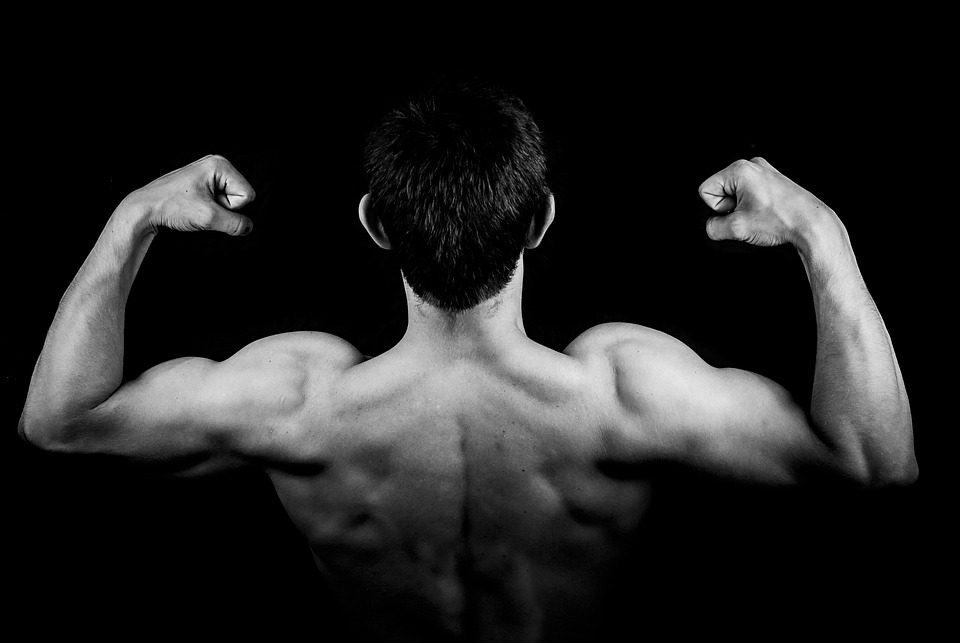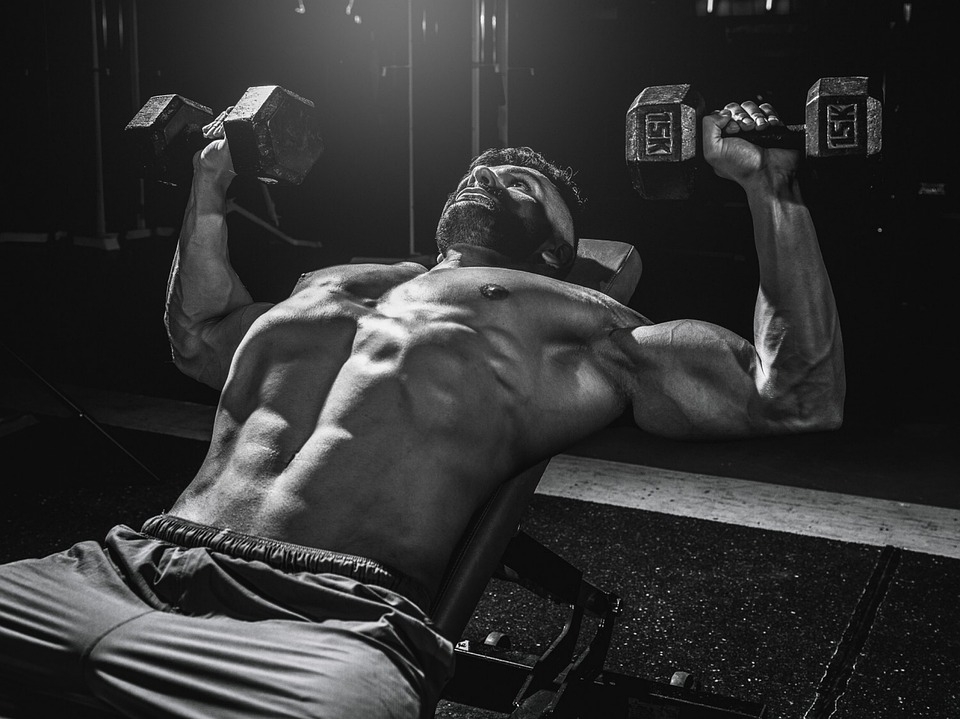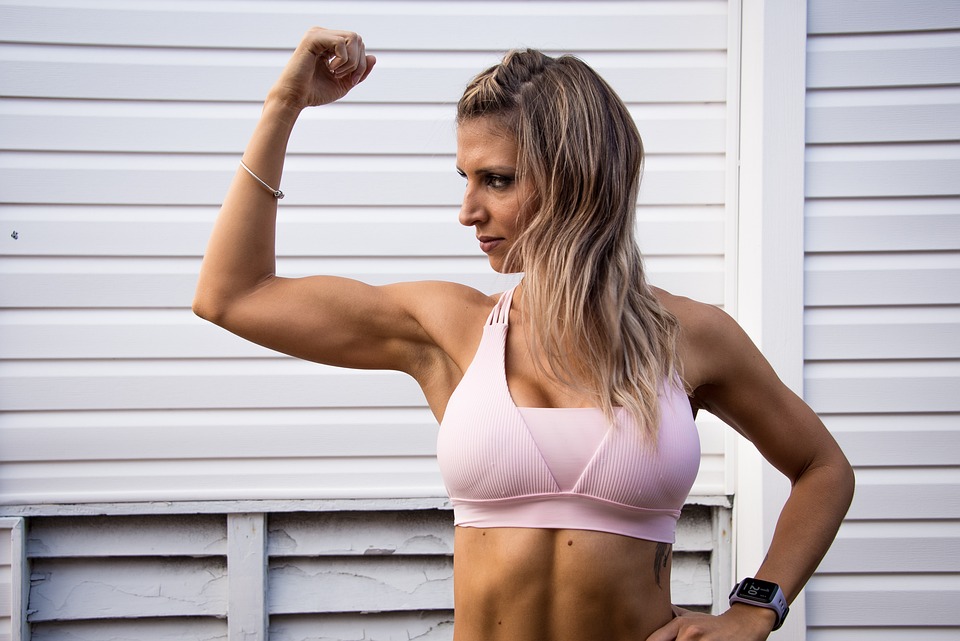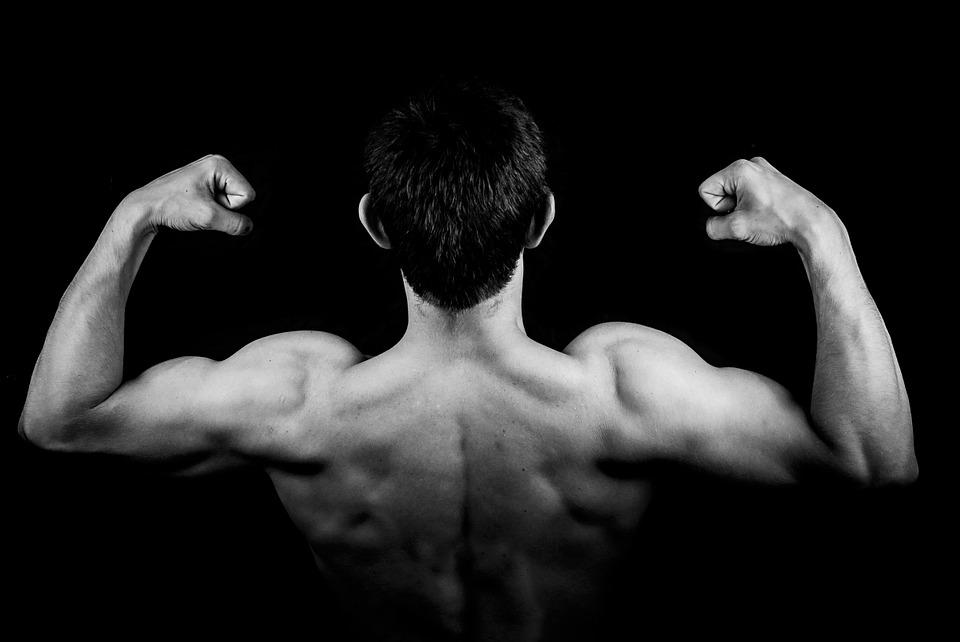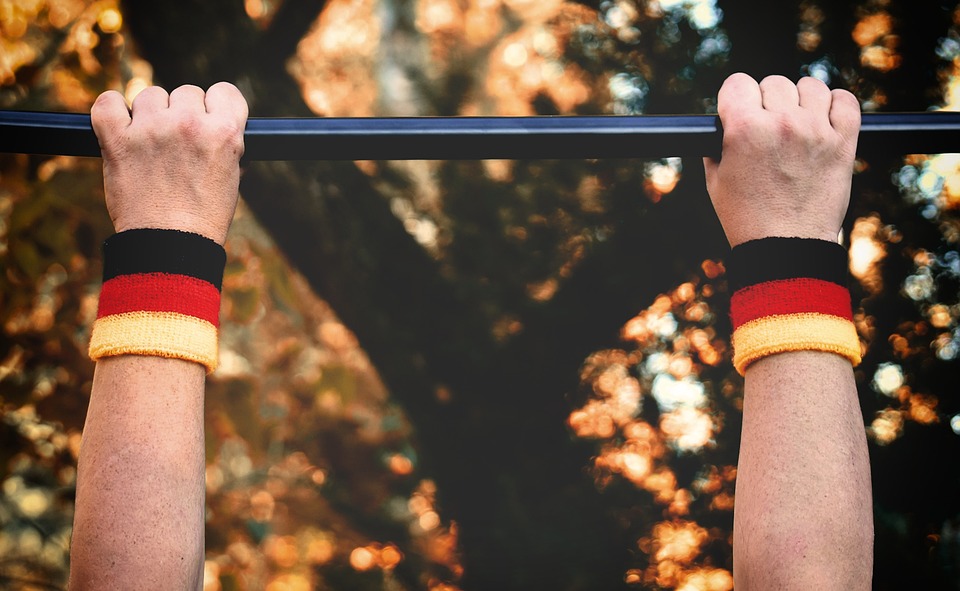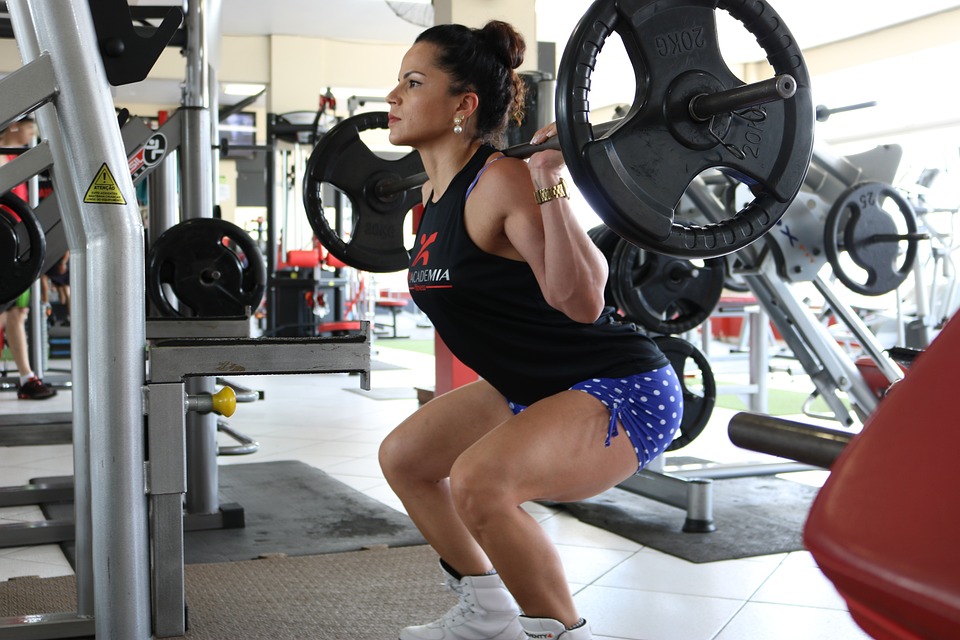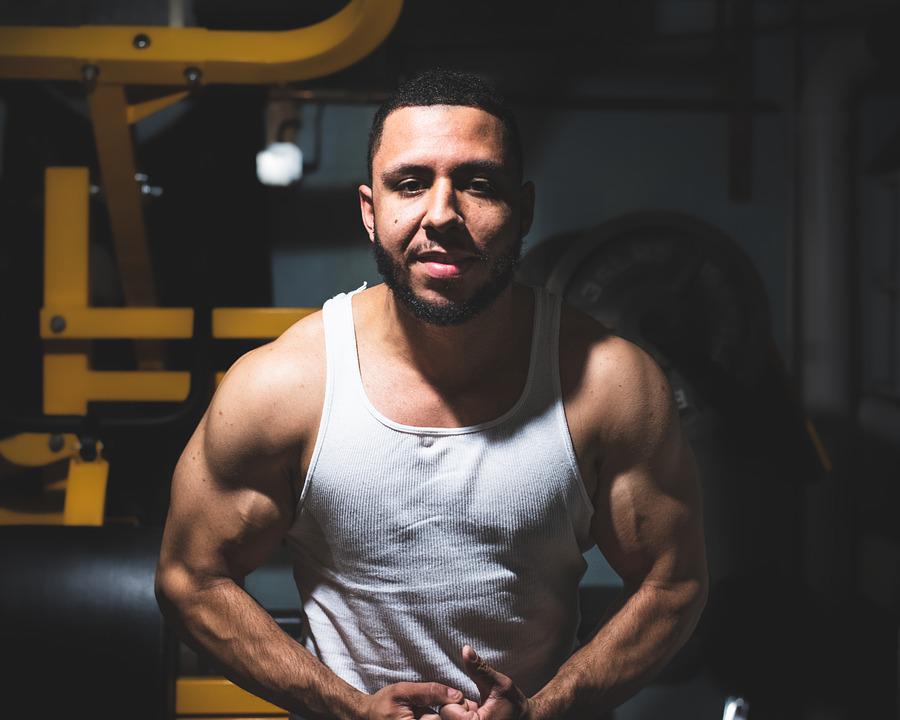
Arm strength is an important part of any fitness program. Strong arms are necessary for many daily activities such as carrying, lifting, pushing, and pulling.
Let’s get it started: Arm toning 101
How often should you lift weights? A 2016 study suggests that training muscle groups at least twice a week can help you see the best results. So, try to build a 20-30 minute routine into your schedule a few times a week.
To build muscle in your arms, you’ll want to focus on the following upper-body muscles:
- Biceps. These are the sexy, bulging muscles at the front of the arm (the ones you flex in front of the mirror).
- Triceps. These are the muscles on the backs of your arms that you don’t use as directly when carrying or lifting (which is why they’re usually weaker than the biceps).
- Lats (latissimus dorsi). These are the big ol’ V-shaped muscles that connect your arms to your spine.
- Deltoids. Posted up on the outer part of the shoulders, these muscles are known for their iconic triangular shape.
A combination of a healthy diet, cardio exercises and strength training is the best way to reduce fat and add muscle mass.
To get the most out of your workout, actively contract the muscles in your arms during each repetition. This will help increase muscle activation and improve the quality of your training.
Arm exercises with weights
You can use dumbbells, medicine balls, or kettlebells in your weighted arm routine. If you don’t have weights, no problem! Grab milk jugs, laundry detergent containers, or a weighted backpack. Any heavy object you can safely grip will work!
How much weight you want to lift with dumbbells depends on your goals. According to Thomas Salvatore, a personal trainer and owner of Your Daily Motivation Fitness, it’s usually more successful to start with lighter weights and more reps. This way, he can see what fitness level the person is on and adjust as needed.
You can always up the weight as you go.
- Biceps curl: 3 sets of 10–15 reps
To do this exercise, start by standing or sitting with a weight in each hand. Hold your arms out straight in front of you, then slowly bend your elbows to bring the weights up to your shoulders. Lower the weights back down to the starting position, making sure to keep your elbows and wrists in line with each other the whole time.
Muscles targeted: Biceps
- Lateral raise: 3 sets of 10–15 reps
Assuming you would like a general overview of the instructions: To complete this exercise, stand or sit with your arms at your sides and a dumbbell in each hand. Next, keeping your palms facing your body and your elbows slightly bent, lift the dumbbells until your arms are parallel to the floor. Your body should now be in the shape of a T. Finally, lower the dumbbells slowly back to the starting position.
Muscles targeted: Shoulders and triceps
- Triceps kickback: 3 sets of 10–15 reps
Keep a flat back and your core engaged, and lower the dumbbells to the middle of your shins To do this exercise, start by standing up and holding a dumbbell in each hand with your palms facing your body. Then, slowly hinge forward by pushing your hips back and slightly bending your knees. Make sure to keep a flat back and your core engaged, and lower the dumbbells to the middle of your shins.
Bend your elbows until they are at a 90-degree angle and in line with your back. Extend your arms behind you until they are straight. Return your arms to the 90-degree bend slowly, keeping your upper arms still so your elbows stay high.
Muscles targeted: Triceps
- Overhead triceps extension: 3 sets of 10–15 reps
To do this exercise, stand or sit with a straight back and hold a dumbbell in both hands in the middle. Raise the dumbbell over your head and then slowly bend your elbows so the weight goes behind your head. Once it is in this position, slowly lift the dumbbell back to the starting position.
Muscles targeted: Triceps
- Rainbow slam: 3 sets of 10–15 reps
Pivot back to the left, and repeat. To perform this exercise, stand with your feet shoulder-width apart and a medicine ball held over your head. Rotate your body to the right so that you are facing your right side and raise your back heel off the floor, bending your knees as if you are going to do a lunge. Slam the ball onto the floor as hard as you can, and then catch it. Pivot back to the left and repeat.
After completing the ball slam, return to the starting position with your arms above your head. Then, swivel around so you are facing your left side and repeat the lunge stance and ball slam. Once you have completed this, return to the starting position.
Muscles targeted: Shoulders, core, legs, glutes, and back
- Kettlebell swing: 3 sets of 10–15 reps
In one motion, snap your hips forward to thrust the kettlebell up, straightening your legs as you do. To do this exercise, stand with your feet shoulder-width apart, holding the kettlebell handle in both hands in front of you. Bend your knees slightly, and let the kettlebell swing between your legs, keeping your back flat and your neck straight. In one motion, snap your hips forward to thrust the kettlebell up, straightening your legs as you do.
To complete the exercise, thrust your hips forward to drive the kettlebell into the air in front of you. Use your arms to control the kettlebell, but don’t pull it up. Let the kettlebell swing back down through your legs and control its fall by keeping the core engaged. As the kettlebell swings down, immediately move into the next rep.
Before beginning the exercise, make sure your core is engaged and your shoulders are pulled down and back. Maintain this form throughout the set. The goal is to use your lower body to drive the move, but it will still work your arms.
The muscles targeted by this workout are the lats, shoulders, chest, abs, glutes, quads, hips, and hamstrings.
- Dumbbell pullover: 3 sets of 10–15 reps
To do this exercise, lie down on a bench or stability ball, holding a dumbbell in both hands. Keep your feet planted firmly on the floor, engage your core, and lift your arms toward the ceiling, carefully holding the dumbbell above your chest with both hands.
To complete this exercise, start by sitting on a bench or ball with your lower back pressed against it. Next, slowly raise your arms overhead until your biceps are level with your ears. Finally, return your arms to the starting position.
Muscles targeted: Lats and chest
Arm workouts without weights
If you can’t find any weights or you’re new to working out your arms, you can use your body weight to do an arm workout.
According to Salvatore, most arm exercises that don’t use weights are just variations of planks or push-ups. This means they require you to engage your core, giving you two benefits for the price of one!
Arm circles
This exercise for beginners focuses on the shoulder muscles and strengthens the biceps and triceps. You can make smaller or larger circles, but make sure you keep the tension down your arm throughout the set.
To perform arm circles:
- Stand tall with your arms straight out to your sides and your muscles contracted down the length of your arm.
- Slowly make circles with your arms by rotating them around your shoulders while keeping them straight and your elbows locked with tension.
- Perform 3 sets of 10–20 repetitions in both directions. You can perform sets of large or small diameter circles to slightly change the effort required.
Arm front raises
This exercise works the front of your shoulder and strengthens your biceps and triceps by contracting them without moving them. To make it more challenging, hold two cans of soup or two water bottles.
To perform arm front raises:
- Stand tall with your arms out to the front, locked out straight with your thumbs toward the ceiling.
- Raise your arms overhead while keeping them straight and locked out until they point straight up overhead, with your upper arms blocking your ears when viewed from the side.
- Slowly lower your arms to the starting position.
- Perform 3 sets of 10–20 repetitions.
Wall angels
This exercise is good for your shoulders and triceps and will help improve your shoulder mobility.
To perform wall angels:
- Stand with your back against a wall with your knees bent and your feet roughly 1–2 feet (about 0.5 meters) away from the wall. Your head, upper back, and tailbone should be in contact with the wall.
- Bend your elbows to 90 degrees and raise your arms until your upper arms are parallel to the floor as if you’re putting your hands up.
- Extend your arms overhead until they’re straight. Aim to keep your arms, head, upper back, and tailbone in contact with the wall.
- Return to the starting position.
- Repeat for 3 sets 10–12 repetitions.
Downward Dog to plank
This exercise strengthens the muscles in your chest, shoulders, and arms. It’s a great way to start building strength in the upper body.
To perform Downward Dog to plank:
- Begin in a pushup plank position with your hands under your shoulders and your arms straight. You can start with your knees on the ground if the pushup plank position is too challenging.
- Raise your hips and press backward with your arms to arrive into the Downward Dog Pose. If you started from your knees, you will raise your knees off of the ground once you have pushed back enough to do so.
- Stabilize briefly in the Downward Dog Pose before returning to the starting position.
- Repeat for 3 sets of 10–12 repetitions.
Plank tap
This exercise is a variation of the plank that strengthens your shoulders, triceps, and biceps.
To perform the plank tap:
- Begin in a pushup plank position with your hands under your shoulders and your arms straight. Keep your spine neutral. To make the exercise more challenging, keep your feet together. To make it easier, widen your feet.
- Bring your left hand up to your right shoulder and tap it before returning your hand to the floor.
- Repeat with your right hand and left shoulder.
- Perform 3 sets of 10–12 repetitions on each side.
Pushup
This text is discussing the benefits of doing pushups. Pushups are a great way to strengthen your chest, shoulders, and triceps, and they also engage your core, which is an added bonus.
Doing pushups on your knees is an easier alternative if the standard variation is too challenging.
To perform a pushup:
- Begin in a pushup position with your hands under your shoulders, spine neutral, and legs straight. If needed, keep your knees on the ground to reduce the difficulty level.
- Lower your entire body in unison toward the floor by bending at the elbow. Keep your elbows close to your sides or at about a 45–degree angle. Lower your chest until your upper arm is parallel to the floor.
- Push through the floor to drive back to the top position, maintaining control the entire time.
- Repeat for 3 sets of 10–12 repetitions. If the sets become too difficult, you can revert to the knees-down variation.
Arm exercises with resistance bands
Even though resistance bands come in attractive colors, they can still give you a strenuous workout. Salvatore points out that they will target all the muscles in your arms and give you a satisfying burn.
According to Salvatore, it is easy to lose tension when performing an exercise with dumbbells. However, with bands, the resistance force is constantly increasing, meaning that the muscle will contract more at the end of the range.
- Biceps curl with band: 3 sets of 10–15 reps
Place the band under your foot and grab the ends with your palms facing forward. Keep your elbows close to your sides and slowly curl your arms until your hands meet your shoulders. Return to the starting position by slowly lowering your arms.
If you’re feeling the burn of muscle contraction, it’s a sign that you should hold the position for an extra second or two.
Muscles targeted: Biceps
- Triceps pressdown with band: 3 sets of 10–15 reps
Facing the band, slightly bend your knees and grab it at its highest point. With your elbows at your sides, pull it down towards the floor until your arms are extended, and then return to the starting position.
Muscles targeted: Triceps
- Pull-apart with band: 3 sets of 10–15 reps
standing with feet hip-width apart, hold one end of the band in each hand lift arms to chest height, keeping them straight with palms facing down and hands about 6 inches apart the band should have a little tension without being taut
This exercise is designed to improve your shoulder’s range of motion. To do this exercise, start by pulling the band apart so your arms are extended out to the sides at the same height. Then, bring your arms back to the center. This exercise will help improve your shoulder’s range of motion.
Muscles targeted: Chest, shoulders, and back
- Staggered-stance row with band: 3 sets of 10–15 reps
How to complete the exercise: 1. Stand in a staggered stance, with your left foot in front of your right foot. 2. Place the band under your left foot, and hold one end of the band in each hand. 3. Bend your knees slightly, and hinge forward at the hips. Be sure to engage your core and keep your back straight. 4. Extend your arms toward your left foot, keeping light tension on the band.
To do this exercise, start by pulling your hands towards your body in a rowing motion, making sure to keep your forearms, elbows, and hands aligned with your rib cage. Once your arms are extended, return to the starting position.
Muscles targeted: Shoulders and triceps
- Triceps kickback with band: 3 sets of 10–15 reps
To do this move, step with your left foot forward and put the band under that foot. You should be holding one end of the band in each hand. Make sure to engage your core, and keep your back straight as you bend your left knee and hinge forward at your hips. Your elbows should be at a 90 degree angle, and your arms should be close to your sides.
Gradually extend your arms straight out from the elbow, maintaining your upper arms stationary as your shoulder blades come together. Reverse the motion and bend your elbows to return to the original position.
Muscles targeted: Shoulders, triceps, and back

